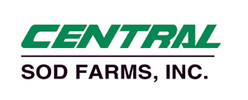Sod Comparison: Choosing the Best Grass Type for Your Lawn
Grass Type - Cool Season vs Warm Season
The first step in selecting sod is to determine if a cool or warm season grass will be better for your purposes. A cool season grass grows better in the northern half of the country and has two growing seasons: spring and fall. A warm season grass grows well in the south, and has a single summer growing season.

If you live in the middle of the country, with hot summers and cold winters, you can choose either one. Most people in the transition zone go with Tall Fescue or Kentucky Bluegrass (cool season) because they are green almost all year and have deep green color. Generally, warm season lawns are much less maintenance intensive, with the drawback of being completely brown for half of the year. Zoysia especially is great for low maintenance lawns such as vacation homes and beach properties. Also, if you don't mind the brown color through the winter months, Zoysia makes a great choice for your home lawn. Bermudagrass can also be used for lawns but grows much more aggressively. A word of caution: Bermuda will grow rapidly into mulched areas, flowerbeds, and your neighbors' lawn!
Check out our Warm Season Maintenance Page and Cool Season Maintenance Page for more info about both types!
Texture
The texture of your new lawn will both depend on the type that you choose, and the height that it is mowed at. The shorter you mow your lawn, the thinner the blades will grow, and will make the texture more fine.
Water Requirements
Different species of grass require different amounts of water to do well. Also, your personal expectations will determine how much water you need to apply. If you want to maintain a golf course appearance through July you will have to water more than if you don't mind slight discoloration.
Cool season grasses will need more water to maintain appearance through drought. Both DuraBlend® Tall Fescue and HD2000® Kentucky Bluegrass are bred to required less water than common cultivars. Warm season grasses will last longer without water during a drought
Fertilizer Requirements
All plants require nutrients to grow, and your lawn is no different. Cool season grasses need to be fertilized in the spring and fall, where warm season turf needs fertilizer in early summer. Out of all the grasses we sell, Zoysia requires the least amount of fertilizer to maintain a healthy stand of turf.
Wear Tolerance
Wear tolerance is the resistance to physical use of the lawn such as heavy use on a sports field. Our grasses are University tested to be superior in this regard. It southern climates, Bermuda is the most wear tolerant since damaged areas regrow quickly. Kentucky Bluegrass is better for northern climate athletic fields.
Cold Tolerance
Our grasses have varying degrees of cold tolerance. Cool season grasses are very cold tolerant and are well suited for long winters. They will turn a greenish brown during the coldest months when sub freezing temperatures are common, and then turn lush green come springtime.
Warm season grasses are much more susceptible to cold temperatures. Winter-kill is common in some southern Bermuda and Zoysia varieties. Since we are located in the transition zone we grow Tahoma 31 Bermuda and Zenith Zoysia, both of which are specifically bred for improved cold tolerance compared to other varieties.
I just want what my neighbors have...
The most common home lawn sod types by region:
- Northeast, New England, Midwest: HD2000® Kentucky Bluegrass
- Mid-Atlantic: DuraBlend® Tall Fescue
- Southeast: Zoysia, Bermuda, Centipede, St. Augustine
Still confused about what type of lawn to establish?
Call us at 410-827-5000 or email us at team@centralsodmd.com for more information!
